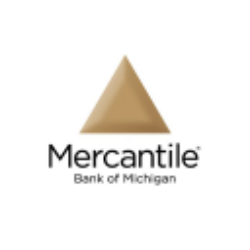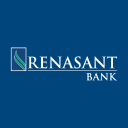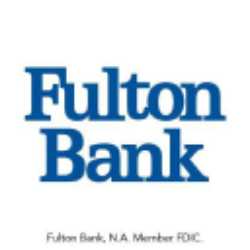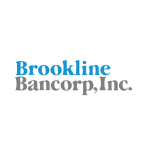ASB

Associated Banc-Corp
ASB
(3.0)24,21 USD
0.47% ROA
4.56% ROE
16.73x PER
3.187.029.120,00 USD
95.98% DER
4.17% Yield
11.87% NPM
Associated Banc-Corp Stock Analysis
Associated Banc-Corp Fundamental Analysis
Fundamental analysis in stock investing is like studying the foundation of a house before buying it. It involves looking at a company's financial health, like its earnings, assets, and debts, to determine if it's a good investment based on its fundamental strength and potential for growth.
| # | Analysis | Rating |
|---|---|---|
| 1 |
PBV
The stock's low PBV ratio (0.66x) suggests it's undervalued, making it an attractive opportunity for investors. |
|
| 2 |
Assets Growth
With continuous growth in revenue over the last five years, this company has proven to be a lucrative investment option, showcasing its strong financial performance. |
|
| 3 |
Dividend Growth
Investors can take confidence in the company's impressive track record of annual dividend growth over the last five years, showcasing a commitment to rewarding shareholders. |
|
| 4 |
Dividend
Investors can take comfort in the company's unwavering commitment to dividends, as it has consistently distributed payouts over the past five years, ensuring a reliable income stream. |
|
| 5 |
ROE
The stock's ROE falls within an average range (9.33%), demonstrating satisfactory profitability and efficiency in utilizing shareholders' equity. |
|
| 6 |
ROA
The stock's ROA (0.95%) indicates that it's doing well in making money from the things it owns. This makes it a good option to invest and make consistent profits. |
|
| 7 |
Graham Number
The Graham number of this company suggests that its stock price may be undervalued, indicating a potentially attractive investment opportunity. |
|
| 8 |
Buffet Intrinsic Value
The company's stock shows potential as it is undervalued (62) according to Warren Buffett's formula, indicating that its intrinsic value exceeds the market price. |
|
| 9 |
DER
The company has a high debt to equity ratio (104%), which means it owes a lot of money compared to what it actually owns, making it financially risky. |
|
| 10 |
Revenue Growth
Company's revenue has remained stagnant over the past three years, indicating a lack of growth and making it a less favorable option. |
|
| 11 |
Net Profit Growth
This company's net profit has remained stagnant over the past five years, indicating a lack of growth and making it a less favorable investment option. |
Associated Banc-Corp Technical Analysis
Technical analysis in stock investing is like reading the patterns on a weather map to predict future weather conditions. It involves studying past stock price movements and trading volumes to make predictions about where a stock's price might go next, without necessarily looking at the company's financial health.
| # | Analysis | Recommendation |
|---|---|---|
| 1 | Awesome Oscillator | Buy |
| 2 | MACD | Buy |
| 3 | RSI | Hold |
| 4 | Stoch RSI | Sell |
Associated Banc-Corp Price Chart
Financial Statements
Financial statements are like report cards for companies. They show how much money a company makes (income statement), what it owns and owes (balance sheet), and where it spends its money (cash flow statement), helping stock investors understand if a company is healthy and worth investing in.
Income Statements
An income statement for a company is like a scoreboard for its profits and losses. It shows how much money the company made (revenue) and how much it spent to make that money (expenses), helping stock investors see if a company is making a profit or not.
Revenue in stock investing is the total amount of money a company earns from its sales, and it's a key factor that investors consider to assess a company's financial performance and growth potential.
| Year | Revenue | Growth |
|---|---|---|
| 1984 | 0 | |
| 1985 | 0 | 0% |
| 1986 | 0 | 0% |
| 1987 | 0 | 0% |
| 1988 | 87.100.000 | 100% |
| 1989 | 94.300.000 | 7.64% |
| 1990 | 107.200.000 | 12.03% |
| 1991 | 160.000.000 | 33% |
| 1992 | 172.200.000 | 7.08% |
| 1993 | 179.100.000 | 3.85% |
| 1994 | 199.600.000 | 10.27% |
| 1995 | 234.400.000 | 14.85% |
| 1996 | 471.600.000 | 50.3% |
| 1997 | 542.700.000 | 13.1% |
| 1998 | 561.600.000 | 3.37% |
| 1999 | 567.763.000 | 1.09% |
| 2000 | 617.588.000 | 8.07% |
| 2001 | 721.574.000 | 14.41% |
| 2002 | 757.197.000 | 4.7% |
| 2003 | 762.874.000 | 0.74% |
| 2004 | 963.341.000 | 20.81% |
| 2005 | 965.050.000 | 0.18% |
| 2006 | 988.594.000 | 2.38% |
| 2007 | 981.798.000 | -0.69% |
| 2008 | 1.076.966.000 | 8.84% |
| 2009 | 514.791.000 | -109.2% |
| 2010 | 895.300.000 | 42.5% |
| 2011 | 943.792.000 | 5.14% |
| 2012 | 948.542.000 | 0.5% |
| 2013 | 955.828.000 | 0.76% |
| 2014 | 968.135.000 | 1.27% |
| 2015 | 990.156.000 | 2.22% |
| 2016 | 1.047.900.000 | 5.51% |
| 2017 | 1.234.600.000 | 15.12% |
| 2018 | 1.200.563.000 | -2.84% |
| 2019 | 1.120.712.000 | -7.13% |
| 2020 | 1.130.044.000 | 0.83% |
| 2021 | 1.197.097.000 | 5.6% |
| 2022 | 1.195.528.000 | -0.13% |
| 2022 | 1.019.737.000 | -17.24% |
| 2023 | 2.389.336.000 | 57.32% |
Research and Development Expenses are the costs a company incurs to create and improve its products or services, which can be important for investors to evaluate a company's innovation and potential for future growth.
| Year | Research and Development Expenses | Growth |
|---|---|---|
| 1984 | 0 | |
| 1985 | 0 | 0% |
| 1986 | 0 | 0% |
| 1987 | 0 | 0% |
| 1988 | 0 | 0% |
| 1989 | 0 | 0% |
| 1990 | 0 | 0% |
| 1991 | 0 | 0% |
| 1992 | 0 | 0% |
| 1993 | 0 | 0% |
| 1994 | 0 | 0% |
| 1995 | 0 | 0% |
| 1996 | 0 | 0% |
| 1997 | 0 | 0% |
| 1998 | 0 | 0% |
| 1999 | 0 | 0% |
| 2000 | 0 | 0% |
| 2001 | 0 | 0% |
| 2002 | 0 | 0% |
| 2003 | 0 | 0% |
| 2004 | 0 | 0% |
| 2005 | 0 | 0% |
| 2006 | 0 | 0% |
| 2007 | 0 | 0% |
| 2008 | 0 | 0% |
| 2009 | 0 | 0% |
| 2010 | 0 | 0% |
| 2011 | 0 | 0% |
| 2012 | 0 | 0% |
| 2013 | 0 | 0% |
| 2014 | 0 | 0% |
| 2015 | 0 | 0% |
| 2016 | 0 | 0% |
| 2017 | 0 | 0% |
| 2018 | 0 | 0% |
| 2019 | 0 | 0% |
| 2020 | 0 | 0% |
| 2021 | 0 | 0% |
| 2022 | 0 | 0% |
| 2022 | 0 | 0% |
| 2023 | 0 | 0% |
General and Administrative Expenses are the costs a company incurs to run its day-to-day operations, such as office rent, salaries, and utilities, which investors consider to understand a company's overall efficiency and management effectiveness.
| Year | General and Administrative Expenses | Growth |
|---|---|---|
| 1984 | 0 | |
| 1985 | 0 | 0% |
| 1986 | 0 | 0% |
| 1987 | 0 | 0% |
| 1988 | 30.500.000 | 100% |
| 1989 | 32.400.000 | 5.86% |
| 1990 | 36.000.000 | 10% |
| 1991 | 55.000.000 | 34.55% |
| 1992 | 58.600.000 | 6.14% |
| 1993 | 59.400.000 | 1.35% |
| 1994 | 65.000.000 | 8.62% |
| 1995 | 75.400.000 | 13.79% |
| 1996 | 133.700.000 | 43.61% |
| 1997 | 148.500.000 | 9.97% |
| 1998 | 151.600.000 | 2.04% |
| 1999 | 157.007.000 | 3.44% |
| 2000 | 171.362.000 | 8.38% |
| 2001 | 192.918.000 | 11.17% |
| 2002 | 208.040.000 | 7.27% |
| 2003 | 224.548.000 | 7.35% |
| 2004 | 274.941.000 | 18.33% |
| 2005 | 283.431.000 | 3% |
| 2006 | 303.428.000 | 6.59% |
| 2007 | 309.478.000 | 1.95% |
| 2008 | 404.015.000 | 23.4% |
| 2009 | 453.623.000 | 10.94% |
| 2010 | 398.787.000 | -13.75% |
| 2011 | 444.430.000 | 10.27% |
| 2012 | 416.476.000 | -6.71% |
| 2013 | 414.160.000 | -0.56% |
| 2014 | 430.741.000 | 3.85% |
| 2015 | 449.587.000 | 4.19% |
| 2016 | 451.078.000 | 0.33% |
| 2017 | 512.676.000 | 12.01% |
| 2018 | 503.313.000 | -1.86% |
| 2019 | 452.501.000 | -11.23% |
| 2020 | 444.837.000 | -1.72% |
| 2021 | 476.751.000 | 6.69% |
| 2022 | 505.236.000 | 5.64% |
| 2022 | 535.427.000 | 5.64% |
| 2023 | 514.848.000 | -4% |
EBITDA stands for Earnings Before Interest, Taxes, Depreciation, and Amortization. It is a measure that helps stock investors analyze a company's profitability by looking at its earnings without considering certain expenses. This helps to get a clearer picture of the company's financial performance and its ability to generate cash flow.
| Year | EBITDA | Growth |
|---|---|---|
| 1984 | 10.500.000 | |
| 1985 | 13.200.000 | 20.45% |
| 1986 | 13.300.000 | 0.75% |
| 1987 | 15.100.000 | 11.92% |
| 1988 | 0 | 0% |
| 1989 | 0 | 0% |
| 1990 | 0 | 0% |
| 1991 | 0 | 0% |
| 1992 | 0 | 0% |
| 1993 | 0 | 0% |
| 1994 | 0 | 0% |
| 1995 | 0 | 0% |
| 1996 | 0 | 0% |
| 1997 | 0 | 0% |
| 1998 | 0 | 0% |
| 1999 | 0 | 0% |
| 2000 | 0 | 0% |
| 2001 | 0 | 0% |
| 2002 | 0 | 0% |
| 2003 | 409.006.000 | 100% |
| 2004 | 643.977.000 | 36.49% |
| 2005 | 503.247.000 | -27.96% |
| 2006 | 469.203.000 | -7.26% |
| 2007 | 273.547.000 | -71.53% |
| 2008 | -170.755.000 | 260.2% |
| 2009 | -36.109.000 | -372.89% |
| 2010 | 214.990.000 | 116.8% |
| 2011 | 300.750.000 | 28.52% |
| 2012 | 332.328.000 | 9.5% |
| 2013 | 336.577.000 | 1.26% |
| 2014 | 276.611.000 | -21.68% |
| 2015 | 345.570.000 | 19.96% |
| 2016 | 405.634.000 | 14.81% |
| 2017 | 0 | 0% |
| 2018 | 430.234.000 | 100% |
| 2019 | 359.704.000 | -19.61% |
| 2020 | 440.983.000 | 18.43% |
| 2021 | 513.528.000 | 14.13% |
| 2022 | 410.696.000 | -25.04% |
| 2022 | 0 | 0% |
| 2023 | 42.844.000 | 100% |
Gross profit is the money a company makes from selling its products or services after subtracting the cost of producing or providing them, and it is an important measure for investors to understand a company's profitability.
| Year | Gross Profit | Growth |
|---|---|---|
| 1984 | 0 | |
| 1985 | 0 | 0% |
| 1986 | 0 | 0% |
| 1987 | 0 | 0% |
| 1988 | 87.100.000 | 100% |
| 1989 | 94.300.000 | 7.64% |
| 1990 | 107.200.000 | 12.03% |
| 1991 | 160.000.000 | 33% |
| 1992 | 172.200.000 | 7.08% |
| 1993 | 179.100.000 | 3.85% |
| 1994 | 199.600.000 | 10.27% |
| 1995 | 234.400.000 | 14.85% |
| 1996 | 471.600.000 | 50.3% |
| 1997 | 542.700.000 | 13.1% |
| 1998 | 561.600.000 | 3.37% |
| 1999 | 567.763.000 | 1.09% |
| 2000 | 617.588.000 | 8.07% |
| 2001 | 721.574.000 | 14.41% |
| 2002 | 757.197.000 | 4.7% |
| 2003 | 762.874.000 | 0.74% |
| 2004 | 963.341.000 | 20.81% |
| 2005 | 965.050.000 | 0.18% |
| 2006 | 988.594.000 | 2.38% |
| 2007 | 981.798.000 | -0.69% |
| 2008 | 1.076.966.000 | 8.84% |
| 2009 | 514.791.000 | -109.2% |
| 2010 | 895.300.000 | 42.5% |
| 2011 | 943.792.000 | 5.14% |
| 2012 | 948.542.000 | 0.5% |
| 2013 | 955.828.000 | 0.76% |
| 2014 | 884.030.000 | -8.12% |
| 2015 | 990.156.000 | 10.72% |
| 2016 | 1.047.900.000 | 5.51% |
| 2017 | 1.234.600.000 | 15.12% |
| 2018 | 1.200.563.000 | -2.84% |
| 2019 | 1.120.712.000 | -7.13% |
| 2020 | 1.130.044.000 | 0.83% |
| 2021 | 1.197.097.000 | 5.6% |
| 2022 | 1.195.528.000 | -0.13% |
| 2022 | 1.019.737.000 | -17.24% |
| 2023 | 2.381.732.000 | 57.19% |
Net income in stock investing is like the money a company actually gets to keep as profit after paying all its bills, and it's an important measure to understand how well a company is doing financially.
| Year | Net Profit | Growth |
|---|---|---|
| 1984 | 10.500.000 | |
| 1985 | 13.200.000 | 20.45% |
| 1986 | 13.300.000 | 0.75% |
| 1987 | 15.100.000 | 11.92% |
| 1988 | 17.300.000 | 12.72% |
| 1989 | 19.200.000 | 9.9% |
| 1990 | 21.300.000 | 9.86% |
| 1991 | 31.600.000 | 32.59% |
| 1992 | 36.200.000 | 12.71% |
| 1993 | 40.400.000 | 10.4% |
| 1994 | 46.700.000 | 13.49% |
| 1995 | 57.200.000 | 18.36% |
| 1996 | 52.400.000 | -9.16% |
| 1997 | 157.000.000 | 66.62% |
| 1998 | 164.900.000 | 4.79% |
| 1999 | 167.983.000 | 1.84% |
| 2000 | 179.522.000 | 6.43% |
| 2001 | 210.719.000 | 14.81% |
| 2002 | 228.657.000 | 7.84% |
| 2003 | 258.286.000 | 11.47% |
| 2004 | 320.161.000 | 19.33% |
| 2005 | 316.645.000 | -1.11% |
| 2006 | 285.752.000 | -10.81% |
| 2007 | 168.452.000 | -69.63% |
| 2008 | -131.859.000 | 227.75% |
| 2009 | -856.000 | -15304.09% |
| 2010 | 139.699.000 | 100.61% |
| 2011 | 178.973.000 | 21.94% |
| 2012 | 188.692.000 | 5.15% |
| 2013 | 190.509.000 | 0.95% |
| 2014 | 188.301.000 | -1.17% |
| 2015 | 200.274.000 | 5.98% |
| 2016 | 229.264.000 | 12.64% |
| 2017 | 333.562.000 | 31.27% |
| 2018 | 326.790.000 | -2.07% |
| 2019 | 306.771.000 | -6.53% |
| 2020 | 350.994.000 | 12.6% |
| 2021 | 366.122.000 | 4.13% |
| 2022 | 332.992.000 | -9.95% |
| 2022 | 182.956.000 | -82.01% |
| 2023 | 462.292.000 | 60.42% |
EPS, or earnings per share, is a measure that shows how much profit a company has earned for each outstanding share of its stock, and it is important for stock investors as it helps understand the profitability of a company and compare it with other companies in the market.
| Year | Earning per Share (EPS) | Growth |
|---|---|---|
| 1984 | 0 | |
| 1985 | 0 | 0% |
| 1986 | 0 | 0% |
| 1987 | 1 | 0% |
| 1988 | 1 | 0% |
| 1989 | 1 | 0% |
| 1990 | 1 | 0% |
| 1991 | 1 | 0% |
| 1992 | 1 | 0% |
| 1993 | 1 | 0% |
| 1994 | 1 | 100% |
| 1995 | 1 | 0% |
| 1996 | 0 | 0% |
| 1997 | 1 | 100% |
| 1998 | 1 | 0% |
| 1999 | 1 | 0% |
| 2000 | 2 | 0% |
| 2001 | 2 | 0% |
| 2002 | 2 | 50% |
| 2003 | 2 | 0% |
| 2004 | 2 | 0% |
| 2005 | 2 | 0% |
| 2006 | 2 | 0% |
| 2007 | 1 | -100% |
| 2008 | -1 | 200% |
| 2009 | 0 | 0% |
| 2010 | 1 | 0% |
| 2011 | 1 | 100% |
| 2012 | 1 | 0% |
| 2013 | 1 | 0% |
| 2014 | 1 | 0% |
| 2015 | 1 | 0% |
| 2016 | 2 | 0% |
| 2017 | 2 | 0% |
| 2018 | 2 | 50% |
| 2019 | 2 | -100% |
| 2020 | 2 | 50% |
| 2021 | 2 | 0% |
| 2022 | 2 | 0% |
| 2022 | 1 | -100% |
| 2023 | 3 | 66.67% |
Cashflow Statements
Cashflow statements show the movement of money in and out of a company, helping stock investors understand how much money a company makes and spends. By examining cashflow statements, investors can assess if a company is generating enough cash to pay its bills, invest in growth, and provide returns to stockholders.
Free cash flow is the leftover cash that a company generates after covering its operating expenses and capital expenditures, which is important for stock investors as it shows how much money a company has available to invest in growth, pay dividends, or reduce debt.
| Year | Free Cashflow | Growth |
|---|---|---|
| 1988 | 16.000.000 | |
| 1989 | 21.100.000 | 24.17% |
| 1990 | 600.000 | -3416.67% |
| 1991 | 56.000.000 | 98.93% |
| 1992 | 33.900.000 | -65.19% |
| 1993 | 87.500.000 | 61.26% |
| 1994 | 32.300.000 | -170.9% |
| 1995 | 51.100.000 | 36.79% |
| 1996 | 137.000.000 | 62.7% |
| 1997 | 108.300.000 | -26.5% |
| 1998 | 249.600.000 | 56.61% |
| 1999 | 177.324.000 | -40.76% |
| 2000 | -8.111.000 | 2286.22% |
| 2001 | 285.720.000 | 102.84% |
| 2002 | 483.511.000 | 40.91% |
| 2003 | 368.536.000 | -31.2% |
| 2004 | 330.480.000 | -11.52% |
| 2005 | 303.332.000 | -8.95% |
| 2006 | 256.562.000 | -18.23% |
| 2007 | 406.385.000 | 36.87% |
| 2008 | 98.968.000 | -310.62% |
| 2009 | 471.359.000 | 79% |
| 2010 | 233.139.000 | -102.18% |
| 2011 | 266.511.000 | 12.52% |
| 2012 | 419.540.000 | 36.48% |
| 2013 | 162.341.000 | -158.43% |
| 2014 | 247.108.000 | 34.3% |
| 2015 | 525.061.000 | 52.94% |
| 2016 | 410.999.000 | -27.75% |
| 2017 | 430.713.000 | 4.58% |
| 2018 | 506.801.000 | 15.01% |
| 2019 | 495.138.000 | -2.36% |
| 2020 | 477.270.000 | -3.74% |
| 2021 | 783.855.000 | 39.11% |
| 2022 | 380.927.000 | -105.78% |
| 2022 | 185.461.000 | -105.39% |
| 2023 | 157.722.000 | -17.59% |
Operating cash flow represents the cash generated or consumed by a company's day-to-day operations, excluding external investing or financing activities, and is crucial for stock investors as it shows how much cash a company is generating from its core business operations.
| Year | Operating Cashflow | Growth |
|---|---|---|
| 1988 | 23.400.000 | |
| 1989 | 26.300.000 | 11.03% |
| 1990 | 4.400.000 | -497.73% |
| 1991 | 60.000.000 | 92.67% |
| 1992 | 38.700.000 | -55.04% |
| 1993 | 94.300.000 | 58.96% |
| 1994 | 36.300.000 | -159.78% |
| 1995 | 74.200.000 | 51.08% |
| 1996 | 148.800.000 | 50.13% |
| 1997 | 138.600.000 | -7.36% |
| 1998 | 270.100.000 | 48.69% |
| 1999 | 189.152.000 | -42.8% |
| 2000 | -409.000 | 46347.43% |
| 2001 | 298.584.000 | 100.14% |
| 2002 | 496.801.000 | 39.9% |
| 2003 | 383.501.000 | -29.54% |
| 2004 | 338.142.000 | -13.41% |
| 2005 | 317.826.000 | -6.39% |
| 2006 | 291.377.000 | -9.08% |
| 2007 | 437.856.000 | 33.45% |
| 2008 | 121.762.000 | -259.6% |
| 2009 | 505.954.000 | 75.93% |
| 2010 | 309.787.000 | -63.32% |
| 2011 | 350.484.000 | 11.61% |
| 2012 | 487.263.000 | 28.07% |
| 2013 | 212.737.000 | -129.04% |
| 2014 | 301.744.000 | 29.5% |
| 2015 | 628.942.000 | 52.02% |
| 2016 | 458.368.000 | -37.21% |
| 2017 | 496.567.000 | 7.69% |
| 2018 | 574.260.000 | 13.53% |
| 2019 | 550.020.000 | -4.41% |
| 2020 | 529.551.000 | -3.87% |
| 2021 | 846.566.000 | 37.45% |
| 2022 | 442.740.000 | -91.21% |
| 2022 | 199.339.000 | -122.1% |
| 2023 | 169.238.000 | -17.79% |
Capex, short for capital expenditures, refers to the money a company spends on acquiring or upgrading tangible assets like buildings, equipment, or technology, which is important for stock investors as it indicates how much a company is investing in its infrastructure to support future growth and profitability.
| Year | Capital Expenditure | Growth |
|---|---|---|
| 1988 | 7.400.000 | |
| 1989 | 5.200.000 | -42.31% |
| 1990 | 3.800.000 | -36.84% |
| 1991 | 4.000.000 | 5% |
| 1992 | 4.800.000 | 16.67% |
| 1993 | 6.800.000 | 29.41% |
| 1994 | 4.000.000 | -70% |
| 1995 | 23.100.000 | 82.68% |
| 1996 | 11.800.000 | -95.76% |
| 1997 | 30.300.000 | 61.06% |
| 1998 | 20.500.000 | -47.8% |
| 1999 | 11.828.000 | -73.32% |
| 2000 | 7.702.000 | -53.57% |
| 2001 | 12.864.000 | 40.13% |
| 2002 | 13.290.000 | 3.21% |
| 2003 | 14.965.000 | 11.19% |
| 2004 | 7.662.000 | -95.31% |
| 2005 | 14.494.000 | 47.14% |
| 2006 | 34.815.000 | 58.37% |
| 2007 | 31.471.000 | -10.63% |
| 2008 | 22.794.000 | -38.07% |
| 2009 | 34.595.000 | 34.11% |
| 2010 | 76.648.000 | 54.87% |
| 2011 | 83.973.000 | 8.72% |
| 2012 | 67.723.000 | -23.99% |
| 2013 | 50.396.000 | -34.38% |
| 2014 | 54.636.000 | 7.76% |
| 2015 | 103.881.000 | 47.41% |
| 2016 | 47.369.000 | -119.3% |
| 2017 | 65.854.000 | 28.07% |
| 2018 | 67.459.000 | 2.38% |
| 2019 | 54.882.000 | -22.92% |
| 2020 | 52.281.000 | -4.98% |
| 2021 | 62.711.000 | 16.63% |
| 2022 | 61.813.000 | -1.45% |
| 2022 | 13.878.000 | -345.4% |
| 2023 | 11.516.000 | -20.51% |
Balance Sheet
Balance sheets provide a snapshot of a company's financial health and its assets (such as cash, inventory, and property) and liabilities (like debts and obligations) at a specific point in time. For stock investors, balance sheets help assess the company's overall worth and evaluate its ability to meet financial obligations and support future growth.
Equity refers to the ownership interest or stake that shareholders have in a company, representing their claim on its assets and earnings after all debts and liabilities are paid.
| Year | Equity | Growth |
|---|---|---|
| 1988 | 126.100.000 | |
| 1989 | 138.600.000 | 9.02% |
| 1990 | 158.100.000 | 12.33% |
| 1991 | 221.900.000 | 28.75% |
| 1992 | 257.000.000 | 13.66% |
| 1993 | 274.600.000 | 6.41% |
| 1994 | 325.600.000 | 15.66% |
| 1995 | 393.100.000 | 17.17% |
| 1996 | 813.700.000 | 51.69% |
| 1997 | 878.700.000 | 7.4% |
| 1998 | 909.800.000 | 3.42% |
| 1999 | 968.696.000 | 6.08% |
| 2000 | 1.070.416.000 | 9.5% |
| 2001 | 1.272.183.000 | 15.86% |
| 2002 | 1.530.368.000 | 16.87% |
| 2003 | 2.017.419.000 | 24.14% |
| 2004 | 2.324.978.000 | 13.23% |
| 2005 | 2.245.493.000 | -3.54% |
| 2006 | 2.329.705.000 | 3.61% |
| 2007 | 2.876.503.000 | 19.01% |
| 2008 | 2.738.608.000 | -5.04% |
| 2009 | 3.158.791.000 | 13.3% |
| 2010 | 2.865.794.000 | -10.22% |
| 2011 | 2.936.399.000 | 2.4% |
| 2012 | 2.891.290.000 | -1.56% |
| 2013 | 2.800.251.000 | -3.25% |
| 2014 | 2.937.246.000 | 4.66% |
| 2015 | 3.091.312.000 | 4.98% |
| 2016 | 3.237.443.000 | 4.51% |
| 2017 | 3.780.887.000 | 14.37% |
| 2018 | 3.922.123.000 | 3.6% |
| 2019 | 4.090.933.000 | 4.13% |
| 2020 | 4.024.853.000 | -1.64% |
| 2021 | 4.015.490.000 | -0.23% |
| 2022 | 4.127.643.000 | 2.72% |
| 2022 | 4.173.974.000 | 1.11% |
| 2023 | 4.242.337.000 | 1.61% |
Assets represent the valuable resources that a company owns, such as cash, inventory, property, and equipment, and understanding a company's assets helps investors assess its value and potential for generating future profits.
| Year | Assets | Growth |
|---|---|---|
| 1988 | 1.751.300.000 | |
| 1989 | 1.870.300.000 | 6.36% |
| 1990 | 2.097.100.000 | 10.81% |
| 1991 | 2.882.100.000 | 27.24% |
| 1992 | 2.981.600.000 | 3.34% |
| 1993 | 3.284.300.000 | 9.22% |
| 1994 | 3.697.800.000 | 11.18% |
| 1995 | 4.419.100.000 | 16.32% |
| 1996 | 10.691.400.000 | 58.67% |
| 1997 | 11.250.700.000 | 4.97% |
| 1998 | 12.519.900.000 | 10.14% |
| 1999 | 13.128.394.000 | 4.63% |
| 2000 | 13.604.374.000 | 3.5% |
| 2001 | 15.043.275.000 | 9.57% |
| 2002 | 15.247.894.000 | 1.34% |
| 2003 | 20.520.136.000 | 25.69% |
| 2004 | 22.100.082.000 | 7.15% |
| 2005 | 20.861.384.000 | -5.94% |
| 2006 | 21.592.083.000 | 3.38% |
| 2007 | 24.192.067.000 | 10.75% |
| 2008 | 22.874.142.000 | -5.76% |
| 2009 | 21.785.596.000 | -5% |
| 2010 | 21.924.217.000 | 0.63% |
| 2011 | 23.531.790.000 | 6.83% |
| 2012 | 24.226.920.000 | 2.87% |
| 2013 | 26.821.774.000 | 9.67% |
| 2014 | 27.715.021.000 | 3.22% |
| 2015 | 29.139.315.000 | 4.89% |
| 2016 | 30.483.594.000 | 4.41% |
| 2017 | 33.647.859.000 | 9.4% |
| 2018 | 32.386.478.000 | -3.89% |
| 2019 | 33.419.783.000 | 3.09% |
| 2020 | 35.104.253.000 | 4.8% |
| 2021 | 39.405.727.000 | 10.92% |
| 2022 | 41.637.381.000 | 5.36% |
| 2022 | 41.015.855.000 | -1.52% |
| 2023 | 41.623.908.000 | 1.46% |
Liabilities refer to the financial obligations or debts that a company owes to creditors or external parties, and understanding a company's liabilities is important for investors as it helps assess the company's financial risk and ability to meet its obligations.
| Year | Liabilities | Growth |
|---|---|---|
| 1988 | 1.625.200.000 | |
| 1989 | 1.731.700.000 | 6.15% |
| 1990 | 1.939.000.000 | 10.69% |
| 1991 | 2.660.200.000 | 27.11% |
| 1992 | 2.724.600.000 | 2.36% |
| 1993 | 3.009.700.000 | 9.47% |
| 1994 | 3.372.200.000 | 10.75% |
| 1995 | 4.026.000.000 | 16.24% |
| 1996 | 9.877.700.000 | 59.24% |
| 1997 | 10.372.000.000 | 4.77% |
| 1998 | 11.610.100.000 | 10.66% |
| 1999 | 12.159.698.000 | 4.52% |
| 2000 | 12.533.958.000 | 2.99% |
| 2001 | 13.771.092.000 | 8.98% |
| 2002 | 13.717.526.000 | -0.39% |
| 2003 | 18.502.717.000 | 25.86% |
| 2004 | 19.775.104.000 | 6.43% |
| 2005 | 18.615.891.000 | -6.23% |
| 2006 | 19.262.378.000 | 3.36% |
| 2007 | 21.315.564.000 | 9.63% |
| 2008 | 20.135.534.000 | -5.86% |
| 2009 | 18.626.805.000 | -8.1% |
| 2010 | 19.058.423.000 | 2.26% |
| 2011 | 20.595.391.000 | 7.46% |
| 2012 | 21.335.630.000 | 3.47% |
| 2013 | 24.021.523.000 | 11.18% |
| 2014 | 24.777.775.000 | 3.05% |
| 2015 | 26.048.003.000 | 4.88% |
| 2016 | 27.246.151.000 | 4.4% |
| 2017 | 29.866.972.000 | 8.77% |
| 2018 | 28.464.355.000 | -4.93% |
| 2019 | 29.328.850.000 | 2.95% |
| 2020 | 31.079.400.000 | 5.63% |
| 2021 | 35.390.237.000 | 12.18% |
| 2022 | 37.509.738.000 | 5.65% |
| 2022 | 36.841.881.000 | -1.81% |
| 2023 | 37.370.161.000 | 1.41% |
Associated Banc-Corp Financial Ratio (TTM)
Valuation Metrics
- Revenue per Share
- 10.72
- Net Income per Share
- 1.26
- Price to Earning Ratio
- 16.73x
- Price To Sales Ratio
- 1.98x
- POCF Ratio
- 5.39
- PFCF Ratio
- 5.95
- Price to Book Ratio
- 0.75
- EV to Sales
- 3.94
- EV Over EBITDA
- -316.08
- EV to Operating CashFlow
- 10.77
- EV to FreeCashFlow
- 11.82
- Earnings Yield
- 0.06
- FreeCashFlow Yield
- 0.17
- Market Cap
- 3,19 Bil.
- Enterprise Value
- 6,33 Bil.
- Graham Number
- 28.35
- Graham NetNet
- -215.01
Income Statement Metrics
- Net Income per Share
- 1.26
- Income Quality
- 3.12
- ROE
- 0.05
- Return On Assets
- 0
- Return On Capital Employed
- 0.02
- Net Income per EBT
- 1.11
- EBT Per Ebit
- 0.85
- Ebit per Revenue
- 0.12
- Effective Tax Rate
- -0.11
Margins
- Sales, General, & Administrative to Revenue
- 0.34
- Research & Developement to Revenue
- 0
- Stock Based Compensation to Revenue
- 0.01
- Gross Profit Margin
- 1.17
- Operating Profit Margin
- 0.12
- Pretax Profit Margin
- 0.11
- Net Profit Margin
- 0.12
Dividends
- Dividend Yield
- 0.04
- Dividend Yield %
- 4.17
- Payout Ratio
- 0.76
- Dividend Per Share
- 0.88
Operating Metrics
- Operating Cashflow per Share
- 3.92
- Free CashFlow per Share
- 3.57
- Capex to Operating CashFlow
- 0.09
- Capex to Revenue
- 0.03
- Capex to Depreciation
- 0.58
- Return on Invested Capital
- 0.03
- Return on Tangible Assets
- 0
- Days Sales Outstanding
- 39.33
- Days Payables Outstanding
- 0
- Days of Inventory on Hand
- 57161.96
- Receivables Turnover
- 9.28
- Payables Turnover
- 0
- Inventory Turnover
- 0.01
- Capex per Share
- 0.35
Balance Sheet
- Cash per Share
- 32,48
- Book Value per Share
- 28,38
- Tangible Book Value per Share
- 20.2
- Shareholders Equity per Share
- 28.31
- Interest Debt per Share
- 34.28
- Debt to Equity
- 0.96
- Debt to Assets
- 0.1
- Net Debt to EBITDA
- -156.91
- Current Ratio
- 0.05
- Tangible Asset Value
- 3,03 Bil.
- Net Current Asset Value
- -36,24 Bil.
- Invested Capital
- -20645946000
- Working Capital
- -22,24 Bil.
- Intangibles to Total Assets
- 0.03
- Average Receivables
- 0,17 Bil.
- Average Payables
- 0,00 Bil.
- Average Inventory
- -150424500
- Debt to Market Cap
- 1.28
Dividends
Dividends in stock investing are like rewards that companies give to their shareholders. They are a portion of the company's profits distributed to investors, typically in the form of cash payments, as a way for them to share in the company's success.
| Year | Dividends | Growth |
|---|---|---|
| 1985 | 1 | |
| 1986 | 0 | 0% |
| 1987 | 1 | 0% |
| 1988 | 1 | 0% |
| 1989 | 1 | 0% |
| 1990 | 1 | 0% |
| 1991 | 1 | 0% |
| 1992 | 1 | 0% |
| 1993 | 1 | 100% |
| 1994 | 1 | 0% |
| 1995 | 1 | 0% |
| 1996 | 1 | 0% |
| 1997 | 1 | 0% |
| 1998 | 1 | 0% |
| 1999 | 1 | 0% |
| 2000 | 1 | 0% |
| 2001 | 1 | 0% |
| 2002 | 1 | 0% |
| 2003 | 1 | 0% |
| 2004 | 1 | 0% |
| 2005 | 1 | 0% |
| 2006 | 1 | 0% |
| 2007 | 1 | 0% |
| 2008 | 1 | 0% |
| 2009 | 0 | 0% |
| 2010 | 0 | 0% |
| 2011 | 0 | 0% |
| 2012 | 0 | 0% |
| 2013 | 0 | 0% |
| 2014 | 0 | 0% |
| 2015 | 0 | 0% |
| 2016 | 0 | 0% |
| 2017 | 1 | 0% |
| 2018 | 1 | 0% |
| 2019 | 1 | 0% |
| 2020 | 1 | 0% |
| 2021 | 1 | 0% |
| 2022 | 1 | 0% |
| 2023 | 1 | 0% |
| 2024 | 1 | 0% |
Associated Banc-Corp Profile
About Associated Banc-Corp
Associated Banc-Corp, a bank holding company, provides various banking and nonbanking products to individuals and businesses in Wisconsin, Illinois, and Minnesota. The company operates through three segments: Corporate and Commercial Specialty; Community, Consumer, and Business; and Risk Management and Shared Services. Its Corporate and Commercial Specialty segment offers lending solutions, including commercial loans and lines of credit, commercial real estate financing, construction loans, letters of credit, leasing, asset based lending, and loan syndications; deposit and cash management solutions, such as commercial checking and interest-bearing deposit products, cash vault and night depository services, liquidity solutions, payables and receivables solutions, and information services; specialized financial services such as interest rate risk management, foreign exchange solutions, and commodity hedging; fiduciary services such as administration of pension, profit-sharing and other employee benefit plans, fiduciary and corporate agency services, and institutional asset management; and investable funds solutions such as savings, money market deposit accounts, IRA accounts, CDs, fixed and variable annuities, full-service, discount and online investment brokerage; investment advisory services; and trust and investment management accounts. The company's Community, Consumer, and Business segment offers lending solutions, such as residential mortgages, home equity loans and lines of credit, personal and installment loans, auto loans, business loans, and business lines of credit; and deposit and transactional solutions such as checking, credit, debit and pre-paid cards, online banking and bill pay; and money transfer services. As of December 31, 2021, the company operated 215 banking branches. Associated Banc-Corp was founded in 1861 and is headquartered in Green Bay, Wisconsin.
- CEO
- Mr. Andrew John Harmening
- Employee
- 4.045
- Address
-
433 Main Street
Green Bay, 54301
Associated Banc-Corp Executives & BODs
| # | Name | Age |
|---|---|---|
| 1 |
Mr. Randall J. Erickson Executive Vice President, General Counsel & Corporate Secretary |
70 |
| 2 |
Mr. John Anthony Utz Executive Vice President, Head of Specialized Industries & Capital Markets and Milwaukee Market President |
70 |
| 3 |
Mr. Derek S. Meyer Executive Vice President & Chief Financial Officer |
70 |
| 4 |
Mr. Ben McCarville Vice President & Director of Investor Relations |
70 |
| 5 |
Mr. Anthony Philip Pecora Senior Vice President, Director of Compliance & Associated Investment Services |
70 |
| 6 |
Ryan Beld Corporate Controller & Chief Accounting Officer |
70 |
| 7 |
Mr. David L. Stein Executive Vice President, Head of Consumer & Business Banking and Madison Market President |
70 |
| 8 |
Mr. Terry Lynn Williams Executive Vice President & Chief Information Officer |
70 |
| 9 |
Mr. Andrew John Harmening President, Chief Executive Officer & Director |
70 |
| 10 |
Mr. Bryan J. Carson Executive Vice President, Chief Product & Marketing Officer |
70 |
























